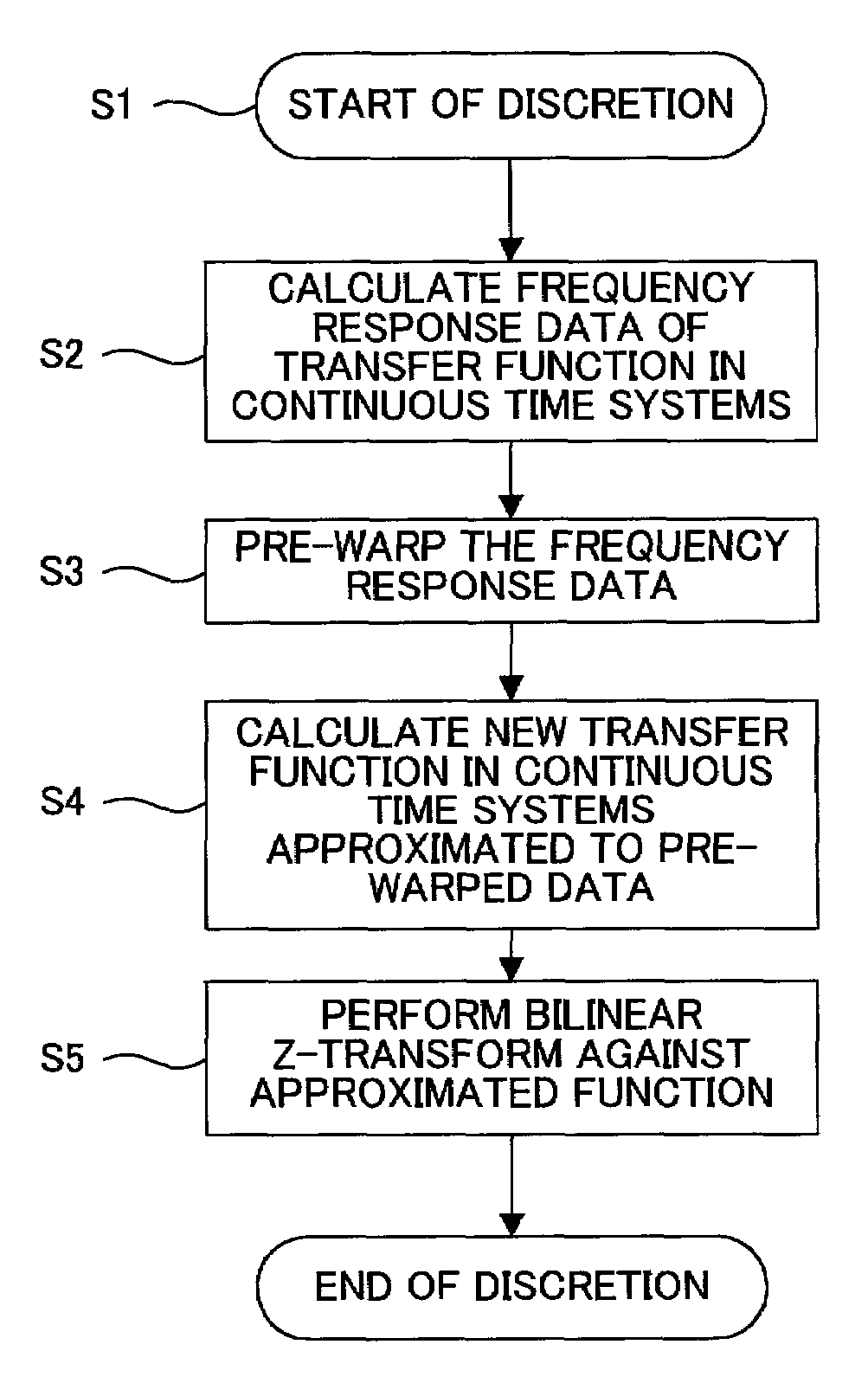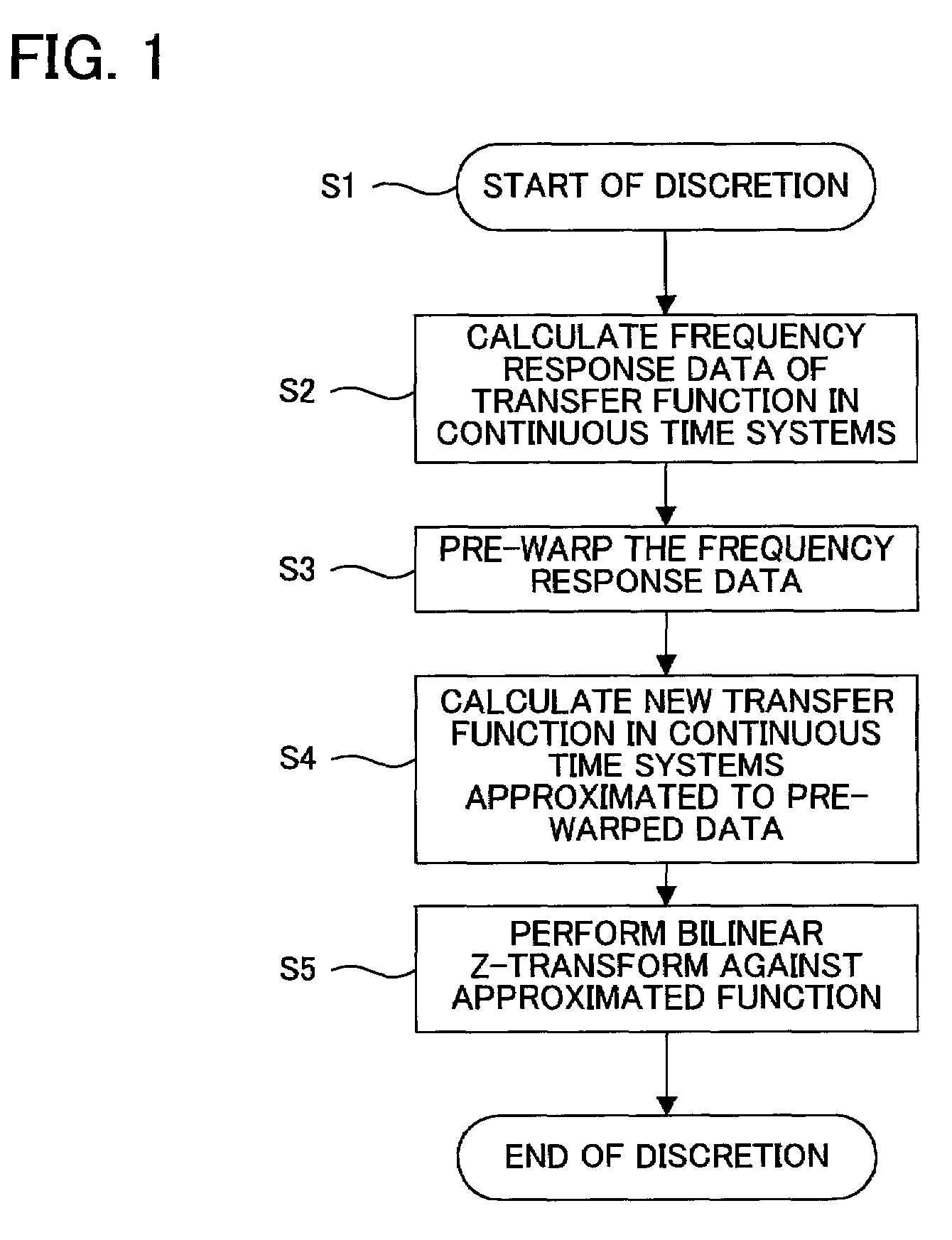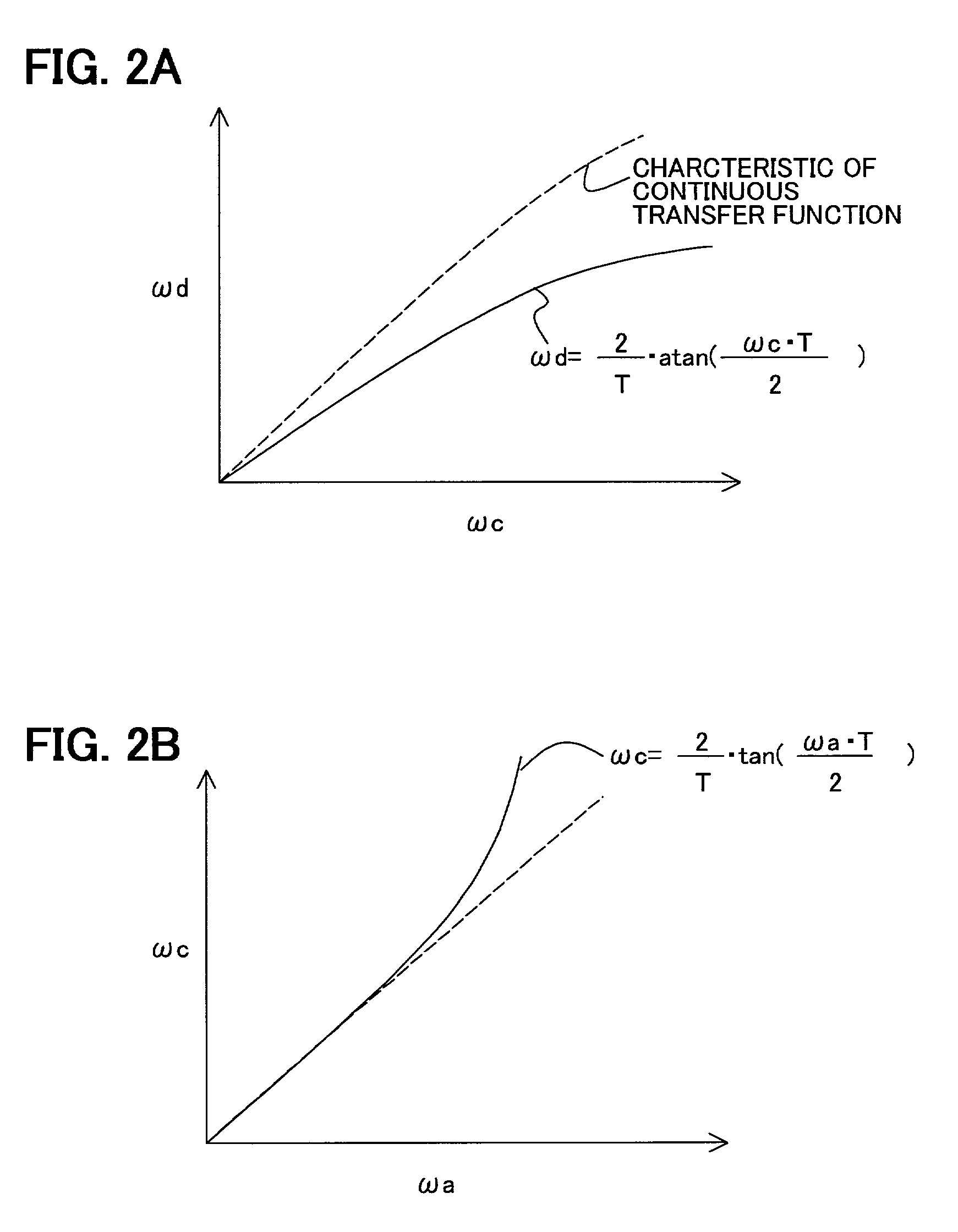Discretization processing method of transfer function in continuous time systems, system and program therefor, and compensator and feedback control system using the same
a technology of continuous time system and discrete system, which is applied in the direction of ignition automatic control, electric controllers, instruments, etc., can solve the problems of inability to transform, deviating characteristics in the high frequency region of the transformed discrete system, and inability to maintain amplitude characteristics in analog continuous time systems. , to achieve the effect of reducing processor load, reproducing accurately, and reducing product manufacturing costs
- Summary
- Abstract
- Description
- Claims
- Application Information
AI Technical Summary
Benefits of technology
Problems solved by technology
Method used
Image
Examples
first embodiment
[First Embodiment]
[0063]FIG. 1 shows a flowchart of the discretization processing according to a first embodiment of the present invention. FIGS. 2A and 2B show explanation diagrams of the principle of the discretization processing according to the present invention. FIG. 3 shows a block diagram of the discretization processing according to the method shown in FIG. 1. FIG. 4 shows an explanation diagram of a pre-warp processing shown in FIG. 1. FIGS. 5A, 5B and 5C show explanation diagrams of poles and zero points in the embodiment shown in FIG. 1. FIG. 6 shows an explanation diagram of the generation operation of a pre-warping and approximation function in the embodiment shown in FIGS. 5A to 5C. Further, FIG. 7 shows frequency characteristic diagrams of a transfer function in continuous time systems before transformation and a transfer function in discrete time systems after transformation according to the embodiment shown in FIG. 5.
[0064]First, referring to FIGS. 5A to 5C and 6, a...
second embodiment
[Second Embodiment]
[0081]FIG. 8 shows a flowchart of the discretization processing according to a second embodiment of the present invention. FIG. 9 shows an explanation diagram of poles and zero points as a result of the discretization processing. FIG. 10 shows a characteristic diagram of an approximated transfer function in continuous time systems according to the second embodiment of the present invention shown in FIG. 8. Also, FIG. 11 shows a frequency characteristic diagram as a result of the discretization processing according to the second embodiment of the present invention shown in FIG. 8.
[0082]In this embodiment, the approximation on the five (5) orders is introduced at the time of approximation by the least square method in step S4, which is two orders higher than the transfer function in continuous time systems, instead of the approximation on the same order as that in the first embodiment. More specifically, while steps S11, 12, 13 and 15 are identical to steps S1, 2, 3...
third embodiment
[Third Embodiment]
[0086]FIG. 12 shows a flowchart of the discretization processing according to a third embodiment of the present invention. FIG. 13 shows an explanation diagram of poles and zero points as a result of the discretization. FIG. 14 shows a frequency characteristic diagram of the approximated transfer function in continuous time systems according to the third embodiment shown in FIG. 12. Also, FIG. 15 shows a frequency characteristic diagram as a result of the discretization according to the third embodiment shown in FIG. 12.
[0087]In this third embodiment, as compared to the first embodiment, the approximation is carried out on first order, which is one order lower than in the first embodiment, when approximating by the least square method in step S4, instead of approximating on the same order as the transfer function in continuous time systems. More specifically, in FIG. 12, steps S21, 22, 23 and 25 are identical to steps S1, 2, 3 and 5 shown in FIG. 1. However, step S...
PUM
| Property | Measurement | Unit |
|---|---|---|
| Nyquist frequency | aaaaa | aaaaa |
| frequency | aaaaa | aaaaa |
| Nyquist frequency | aaaaa | aaaaa |
Abstract
Description
Claims
Application Information
 Login to View More
Login to View More - R&D
- Intellectual Property
- Life Sciences
- Materials
- Tech Scout
- Unparalleled Data Quality
- Higher Quality Content
- 60% Fewer Hallucinations
Browse by: Latest US Patents, China's latest patents, Technical Efficacy Thesaurus, Application Domain, Technology Topic, Popular Technical Reports.
© 2025 PatSnap. All rights reserved.Legal|Privacy policy|Modern Slavery Act Transparency Statement|Sitemap|About US| Contact US: help@patsnap.com



